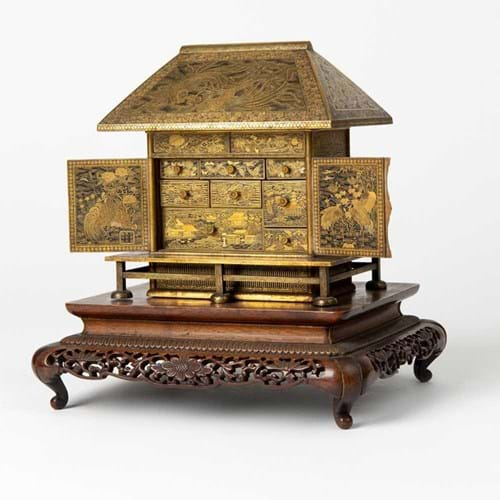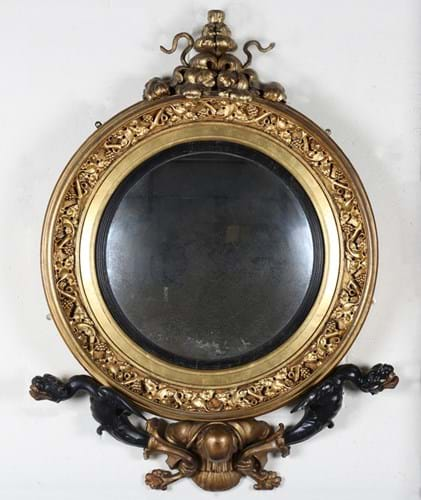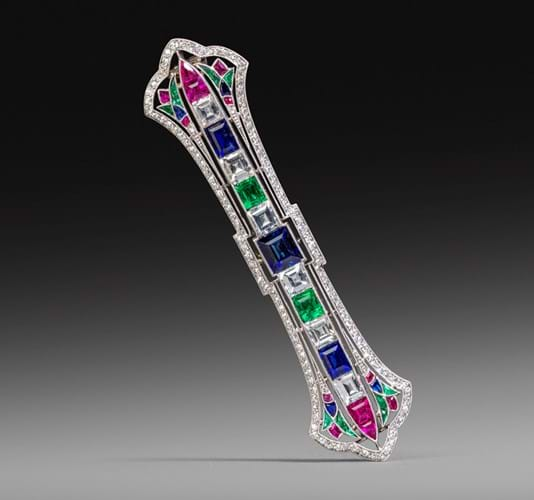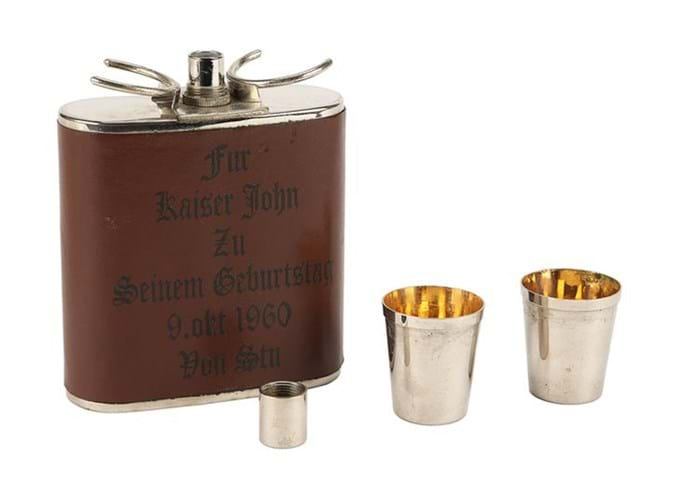
Nunome-zouga gold and silver inlaid cabinet by the Komai Company of Kyoto- £14,000 at Lyon & Turnbull.
1. Japanese cabinet
The Komai family of sword makers and armourers were among the Japanese metalworkers courting a new clientele during the Meiji period (1868-1912). Upon the abolition of the samurai, the Kyoto firm began making decorative objects, mostly made for export. Under the leadership of Komai Otojiro, the company became renowned for producing works displaying the textured inlay in gold and silver technique known as nunome-zougan. Many were shown at international exhibitions either by the Komai Company of Kyoto or dealers such as Ikeda Seisuke, marketing a selection of Japanese products.
The November 4 auction of Fine Asian & Islamic Works of Art at Lyon & Turnbull in London included this impressive example of the nunome-zougan technique – a cabinet (pictured above) in the form of a traditional Japanese timber building with removable yosemune hipped roof and a platform base supported on six soseki foundation stones. It is finely decorated to the roof with phoenixes and dragons and to the walls with various houses in Mount Fuji landscape setting. It came from a private Scottish collection in Perthshire with a guide of £1500-2000 but sold at £14,000.
2. Art Deco brooch
This rare Art Deco gem-set and diamond bar brooch by Gillot & Co., New York sold for £29,000 (estimate £15,000-20,000) at the Woolley & Wallis Fine Jewellery in Salisbury on November 2. Trained in his native France, Paul Gillot (c.1877-1949) was a driving force in American jewellery at the start of the 20th century.
He worked first with Marcus & Co for 12 years then – following service in the First World War - resumed trading in 1916 under his own name. Earning the nickname 'the King of Diamonds', he was described as having designed 'the major portion of Sarah Bernhardt's jewellery' by the Yonkers Statesman in 1927.
This brooch made in the Egyptian revival taste is set with a well-matched selection of step-cut sapphires, rubies, emeralds and diamonds.
3. German hip flask
This German brown leather and plated metal hip flask has the inscription Fur Kaiser John Zu Seinem Geburtstag 9. Okt 1960 Von Stu, which translates as For Emperor John on his Birthday 9 Oct 1960, By Stu". Adhered to the back is a paper inscription detailing its history: it had been a gift from Stuart Sutcliffe to John Lennon on his 20th birthday while The Beatles were playing in Hamburg. It was during the Beatles' Hamburg era (August 1960 to December 1962), that the band played over 250 nights with Sutcliffe playing bass for the band before he left to pursue an art career. He died in 1962.
Lennon later re-gifted the flask to Geoff Mohammed, one of his friends from art college, who sold the flask during the mid-1960s. It came for sale at entertainment memorabilia specialist Prop Store in Rickmansworth on November 3-6. It had an estimate of £4000-6000 but found a buyer via thesaleroom.com at £18,000.
4. Vietnamese bowl
Vietnamese-buyers have sent the best works of art from the Le (1428-1789) and Nguyen (1802-1945) dynasties to unchartered territory in recent years. A particular area of collecting focus are the so-called bleu de Huế porcelain wares that were made in China to Vietnamese designs. Often these pieces (named after Huế, the Nguyen capital and site of the Forbidden Purple City) include the bespoke marks of royal family members and court officials.
The Asian art sale at Roseberys London on November 8 included a 7in (18cm) bowl painted to the exterior with a dragon and a phoenix facing the flaming pearl among waves and clouds. It has a single-character 'nhut' (sun) mark is dated to the Dực Tông reign (1847-83).
Party of the collection of British artist and muralist John Armstrong (1928-2004), it was guided at £800-1200 but sold at £20,000.
5. Convex mirror

Regency giltwood and ebonized convex wall mirror in the manner of Thomas Hope - £12,500 at Toovey’s.
Estimated at £800-1200, this Regency giltwood and ebonized convex wall mirror sold at £12,500 at Toovey’s of Washington, West Sussex on November 3.
These come for sale with some frequency, but this example was a good size at 4ft 7in (1.38m) high and of note for its design that was close to the work of Dutch and British interior decorator Thomas Hope (1769-1831). Particularly admired was the apron with its central mask head issuing winged leopard heads. Detailed photographs supplied by the auction house suggested it will need some significant restoration before it is returned to its former glory.








